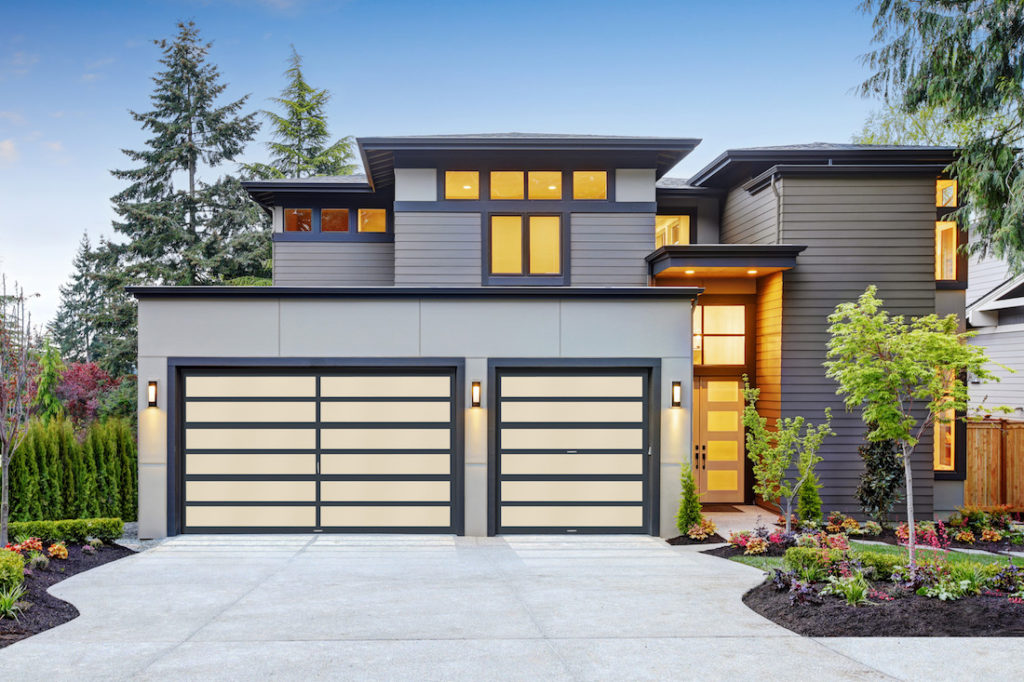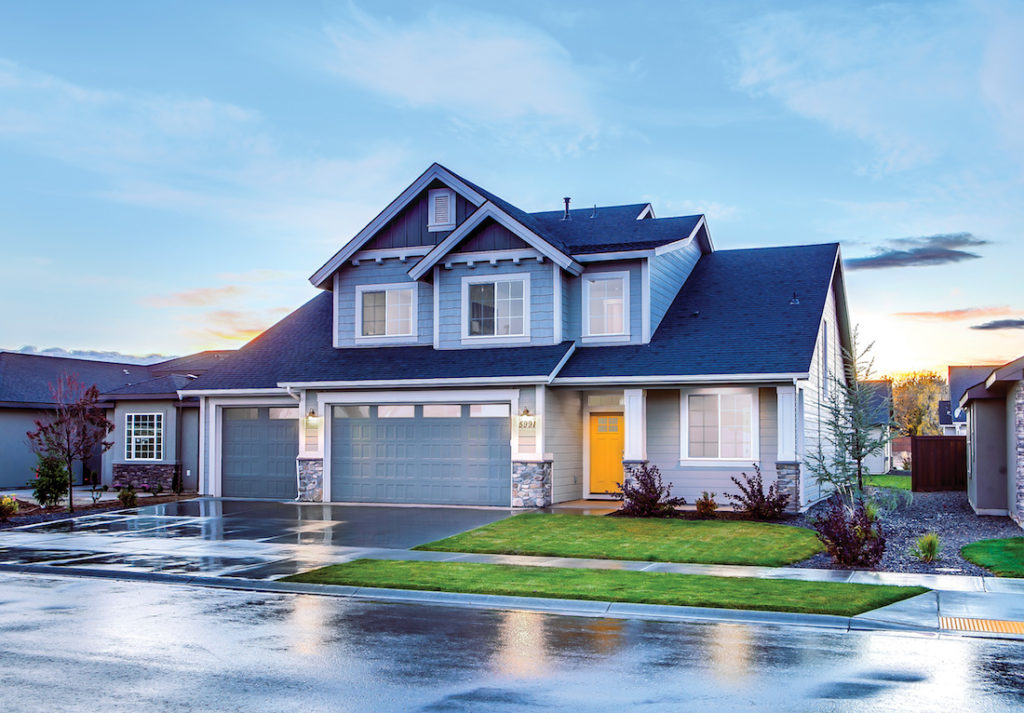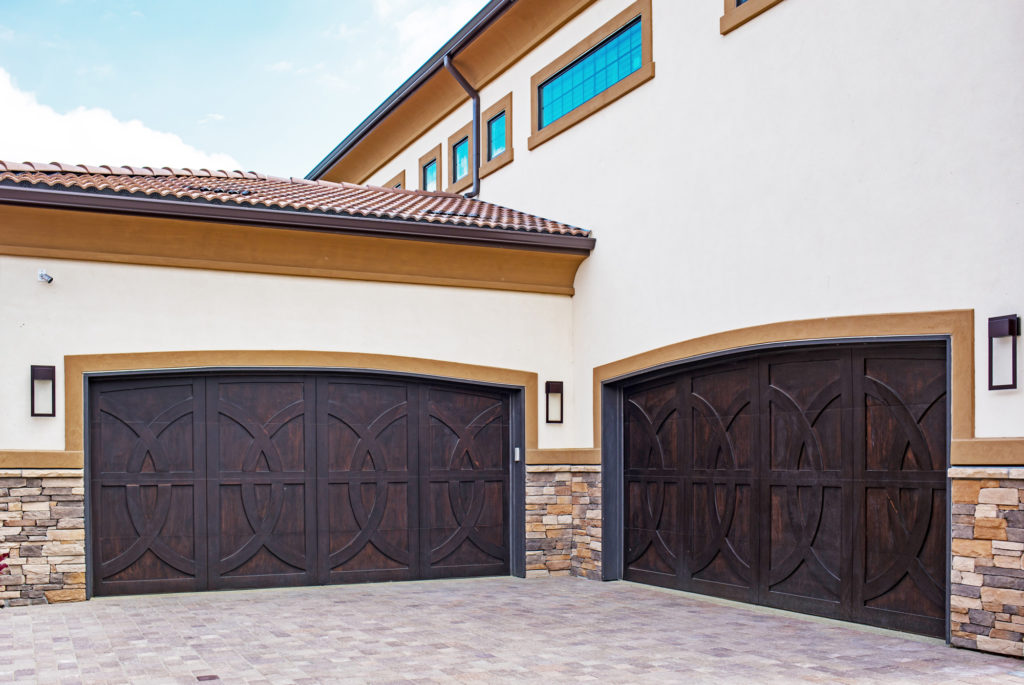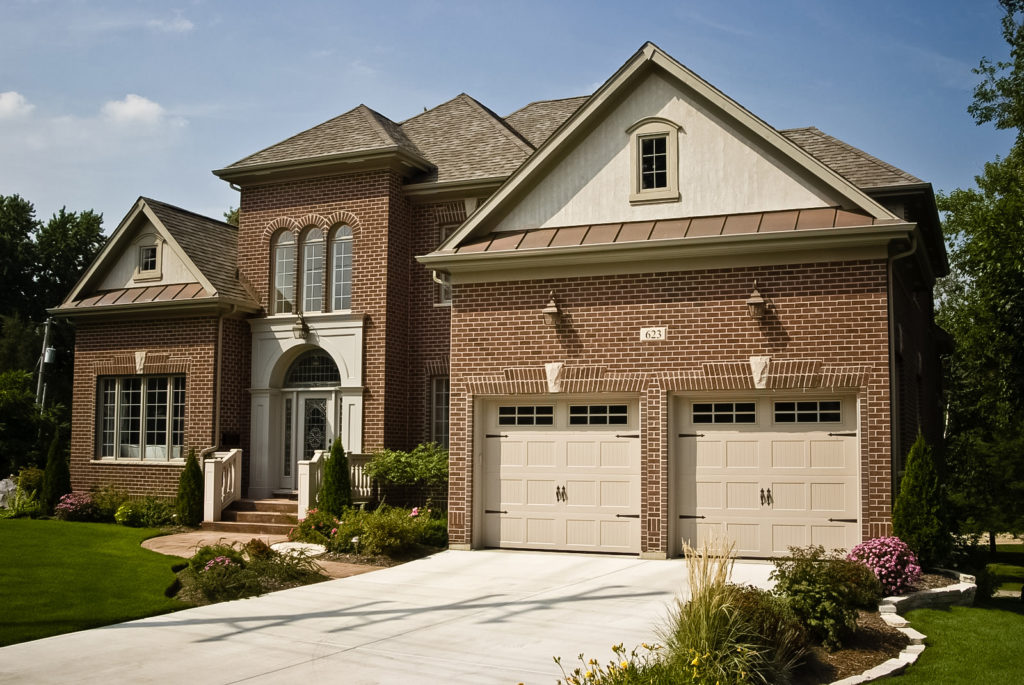Springs gradually wear out over time and can become a huge hazard when they do. Injury from flying metal or a falling door is a serious risk that can result in critical injuries. Make sure that your springs are regularly inspected by trained technicians and service people, and replaced as needed. Even if your door has multiple springs and only one is broke, you should replace both to mitigate risk. This regular maintenance will help keep you safe and extend the life of your garage door.
A garage door is the biggest and heaviest moving item on in almost any home.
Understanding the safety features of your garage door can help you keep it and your family safe now and in the future.
If you have any questions or concerns about the safety of your garage door, please don’t hesitate to reach out to K&B Garage Door Company.
Garage Door Safety Tips
If your cables are frayed or worn when you check them, that could mean that they are about to break. Please be sure to check them frequently, and again, please employ only trained technicians to replace them. High spring tension can be potentially dangerous to you and your door.
This can be caused just by regular, everyday use. If you wish, you may use a spray-on lubricant to reduce noise and squeaking before calling a professional service technician. If squeaking continues, call a professional garage door installer for service.
We do not recommend installing your own garage door unless you have trained professional experience. Installation can be a potentially dangerous task, and The Door & Access Systems Manufacturers Association (DASMA) suggests leaving installation to professional technicians. Even if the repair seems minor, doing your own repairs can cause injury and/or damage to your door, you, or car.
We recommend installing a safety cable if your door does not have extension springs. If installed, this cable would run through the spring and be secured to the wall and/or ceiling at each end. These springs are under high tension when the door is closed, which is usually pretty often. Damaged or broken springs can cause injury and/or damage to the door, your car, or your home. Not sure what you need? Have extension springs but no safety cable? Call your local Las Vegas garage door installers for a safety inspection and expert recommendations on what you might need to secure your space.
Serious issues can arise as the result of a “struggling” door. Chances are, you can’t fix it by yourself and will need the assistance of an expert. Spring systems can be very dangerous, and should only be handled and/or repaired by professional garage door technicians.
A struggling door is a sign you need the help of a pro. This can result from a variety of issues, all of which could be serious. Spring systems can be dangerous and should be repaired only by trained professionals.
Please don’t place your fingers between door panels. It’s an easy mistake, but one that causes injuries to thousands of homeowners (and family members) each year. Utilize your garage door handles or other safe gripping points if you do not have an electric garage door opener.
Particularly when the door is closed, garage door springs are under extreme tension. If the springs are damaged or broken, they can cause damage or even serious injury. That’s why only a trained door systems technician should adjust any part of your garage door.
Though it may seem like a cost-effective measure to install old tracks for a new garage door, it’s actually a potentially dangerous idea. It’s highly likely that your door won’t actually fit exactly onto this track, which can cause derailing, collapse, and several other safety issues. This shortcut will often end up costing you more than a new track.
Regular service and maintenance from a trained professional can keep your garage door operating safely and efficiently for years to come! You can learn a lot from these experts, so we encourage you to consider scheduling an annual visit with your garage door systems technician.
Safety Tips for Garage Door Openers
Avoid injuries to children and/or animals by waiting until your door closes completely before leaving the garage or driveway.
Your reinforcement brackets can cause damage to your door if you aren’t aware of them during your DIY projects. Be sure to check your installation manual for instructions.
Many of our customers think if their door acts sluggish or slow that this is a sign of a weak garage door opener. Because of that, they want something more “powerful”. This isn’t always the case, so it’s best to call a trained technician to properly diagnose the potential issue and create the right solution.
Photo eyes should be installed more than six inches above the garage floor. These eyes sense objects in the path of the closing door. Injury risk to a person or pet is the result of improper installation.
Ensure your garage door opener is placed at least five feet from the floor or higher in order to avoid accidental button pushes from young children.
Please ensure that your children cannot play with your remote controls. Warn little ones about the possible risks of misusing remotes. Communicating that your remote control is “off limits” is a method that many homeowners have found effective.
Like your garage door, your opener should have routine maintenance performed to ensure it is functional and safe. Annual routine maintenance on your garage door opener is included in our Planned Maintenance Program.
Additional Tests & Safety Measures
It’s possible to perform a visual inspection of your garage door routinely to ensure there aren’t any issues. Make sure you look at and assess everything, including your garage door springs, cables, rollers, pulleys, and other door hardware, for signs of loose parts, damage or wear. If you aren’t sure what to look for or you suspect a problem, be sure to call a trusted and qualified person to make repairs.
If you’d like to check your garage door’s balance, there is a quick test you can perform. With the door closed, try lifting the door. (If you have a garage door opener, use the release mechanism to enable you to operate the door by hand for the purpose of this assessment). The goal is to be able to lift the door smoothly with very little resistance. In addition, it should to stay open about 3 to 4 feet above the floor without being held there. If your door does not pass one or both of these assessments, it could mean that your door is out of adjustment.
Every garage door opener is required by federal law to include compliant safety features matching the latest standards in UL 325 (Underwriters Laboratories).
Not sure if your reversing feature is working? You can perform a reversal test yourself at home to ensure the safety of your door. First, test the balance (detailed above). If your door passes these tests, you can proceed to the reversal test.
Open the door completely and place a 1-1/2″ thick piece of wood (a 2×4 laid flat) near the center of the door on the floor. Then, push the wall button (or remote) to close the door. The door MUST reverse when it makes contact with the wood. If the door does not reverse, it must be evaluated, and soon.
To test the force setting of your garage door, simply hold down the bottom as you close the door. If it does not readily reverse, your force setting may be what we consider “excessive” and will need to be adjusted.
Safety is a large concern for our customers, especially those with pets and/or children. Luckily, most modern garage door openers come standard with additional safety features. For example, many door openers include “photo eyes,” which are edge sensors to protect against entrapment.
That said, adding additional safety devices does not always make an old opener meet current UL standards. Proper installation and adjustment is key to a safe and functional garage door. If you have questions, please don’t hesitate to contact us.
- Garage door springs, as well as the brackets, cables, and other hardware attached to the springs, are under an extreme amount of tension and should only be adjusted or repaired by a qualified technician. Handling these parts improperly can cause injury and/or damage.
- Any adjustments to the springs above your door, also called “torsion springs,” should be handled by a professional garage door serviceman. Do not attempt to repair or adjust these springs yourself.
- A safety cable can, and should, be installed on your extension spring, which runs along the side of your door, to act as a safety backup should the spring break.
- Do not ever adjust, remove, or loosen any screws on the bottom brackets of the door. These brackets are also under extreme tension as they are connected to the springs.

Elevate your home's look and value
Discover the outstanding service and selection that has set K&B Garage Door Company apart since 1975. We provide the Las Vegas area with styles and materials other companies can't match, plus innovative garage door technology.

Get answers to your garage door questions
Contact us with any questions you have about purchasing a new garage door in Las Vegas.



